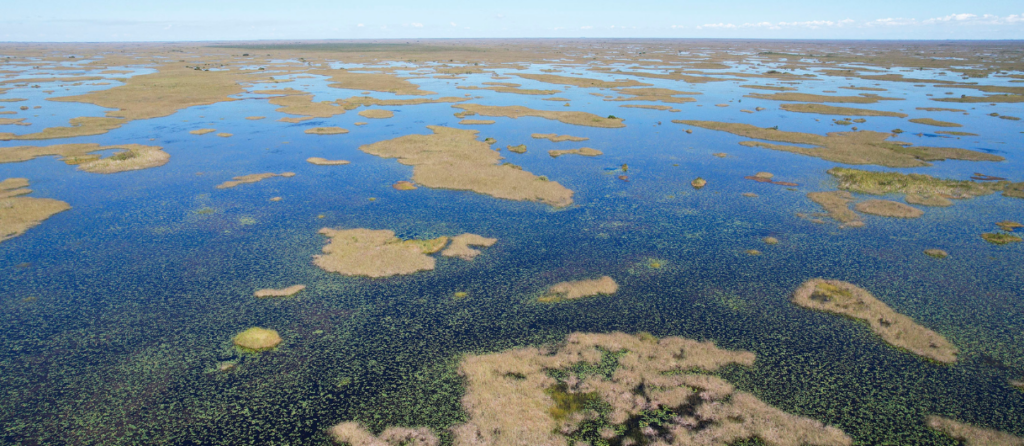Deep Dive: Here’s what Big Sugar can do to fix flooding in the Everglades
Deep Dive: Here’s what Big Sugar can do to fix flooding in the Everglades

All is not well in the central Everglades.
High water levels in the water conservation areas south of Lake Okeechobee and the Everglades Agricultural Area are flooding tree islands, and those dependent upon them — people, and creatures like deer and raccoons — are in harm’s way. The Miccosukee Tribe of Indians and others in the Glades community have beseeched state officials to do something; those officials in turn have asked the U.S. Army Corps of Engineers to open floodgates along the Tamiami Trail to let more water flow south.
While the massive wetlands (aka WCAs) are about a foot higher than they should be, there’s some dispute about where all that water comes from.

A story posted Oct. 18 by the Lake Okeechobee News quotes Tom MacVicar, head and namesake of MacVicar Consulting Inc., a former South Florida Water Management District employee — and a former lobbyist for Big Sugar — saying that most of the water is stuck in the WCAs because of the short-sighted construction of infrastructure.
In particular, he pointed to the East Coast Protection Levee, designed as the name implies to prevent flooding in areas from West Palm Beach to Miami, and U.S. Highway 41 (aka the Tamiami Trail) that crosses the Everglades, cutting the flow of water south from the WCAs into Everglades National Park.
For good measure, MacVicar also takes a potshot at the Cape Sable Seaside Sparrow and restrictions on water flow imposed by the U.S. Fish and Wildlife Service under the Endangered Species Act.
Ultimately, provisions of the Central Everglades Planning Project include raising much of the Tamiami Trail and other projects to improve the flow into Everglades National Park.
The underlying problem
But there’s an underlying problem that’s been skipped over in most accounts of the flooding. South Florida is still stuck with a drainage system developed more than half a century ago, one which prioritizes the well-being of the sugar (and other) farms in the Everglades Agricultural Area over almost everything else.
Our drainage system was designed to turn the WCAs into lakes to keep the EAA dry so Big Sugar could enjoy perfect growing conditions. They get bumper crops while the WCAs drown.
It doesn’t have to be this way. Some things we can’t change, like where and when the rain falls. But other things — like how we manage all that water — can be altered.
Here’s where the water came from
According to the SFWMD, about 2.8 million acre feet of rain fell on the 864,000 acres of WCAs from May 15 (the start of this year’s summer rainy season) to Oct. 10. Direct rainfall accounts for 70% of the water in the WCAs.
Doing the math, you find rain accounts for slightly less than 3 feet, 3 inches of water spread out over those 864,000 acres
In addition to all the rainfall on the WCAs, data from the SFWMD shows that from May 1 to Oct. 10, about 909,300 acre feet of water flowed off the EAA, through the stormwater treatment areas (STAs) and into the WCAs.
That amount of water accounts for about a foot of depth when spread out over the 864,000 acres of WCAs. And coincidentally – or maybe not so coincidentally — the WCAs are about a foot too deep right now.
Keep more water in the EAA
Here’s where water managers need to have take a page from the “Serenity Prayer,” and display “the courage to change the things (they) can” by holding as much of that water in the EAA as possible to keep it from flooding the WCAs and the wildlife in them.
Landowners in the EAA can hold more water on their land.
Currently, water south of Lake Okeechobee is managed to provide what are considered optimum conditions for sugarcane cultivation, which includes draining off enough water to keep the surface of the ground dry but to keep the underground water table low.
But a “white paper” issued in March by the Florida Oceanographic Society — “Big Agriculture Devastating Florida’s Water Quality” — notes that raising the water table in the EAA would not only help keep flood waters out of the WCAs, but extend the usable life of the farmland by reducing soil loss over time.
Landowners in the EAA should accept the responsibility to hold more water on their land. Farmers throughout the country are required to provide on-site storage for runoff water, not only for flood control but as a source of water in dry periods. The system of STAs and WCAs that clean and store water south of Lake Okeechobee were paid for and are maintained, in large part, by taxpayer dollars — and should be used for the benefit of all.
It’s not enough to whine about what can’t be done. What’s needed is the wisdom to see what can be done — and the courage to do it.

